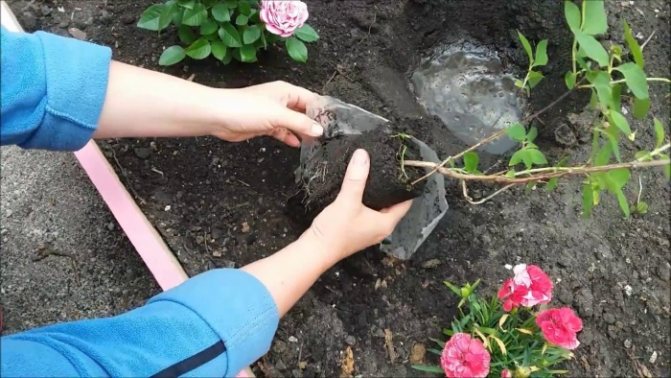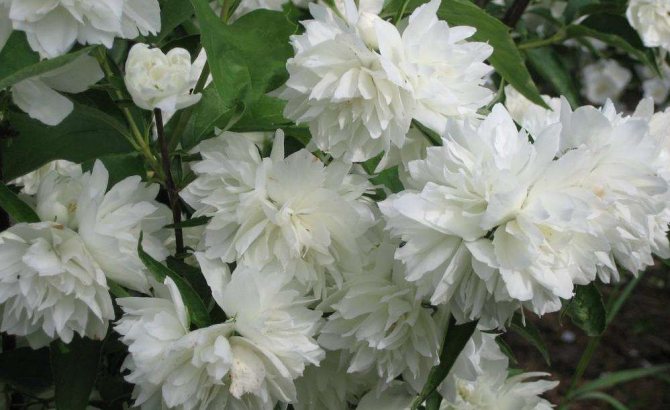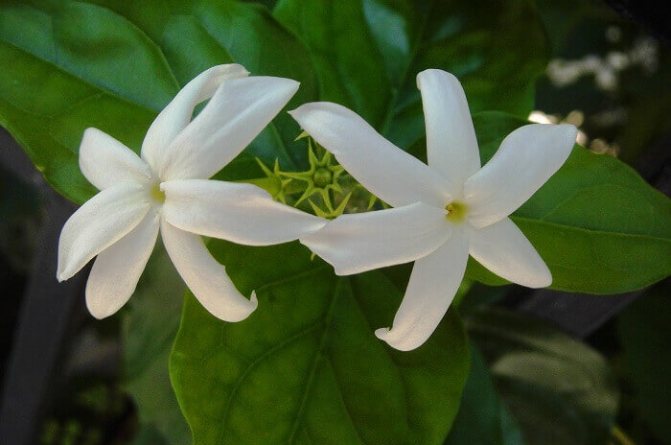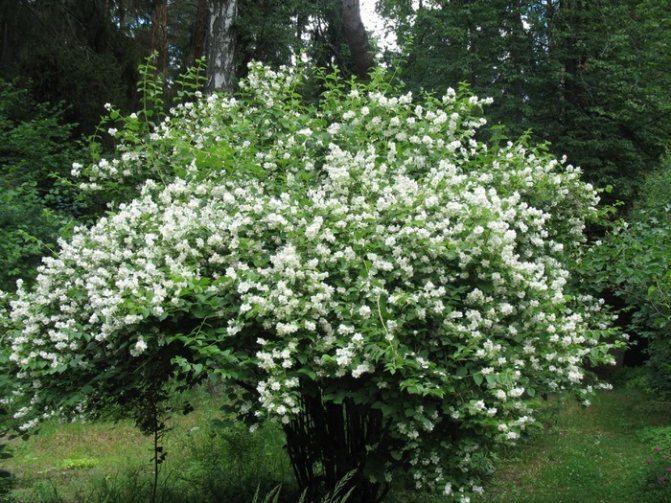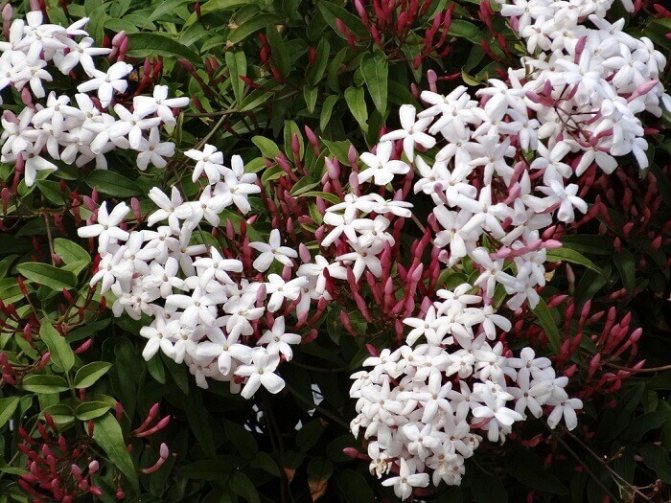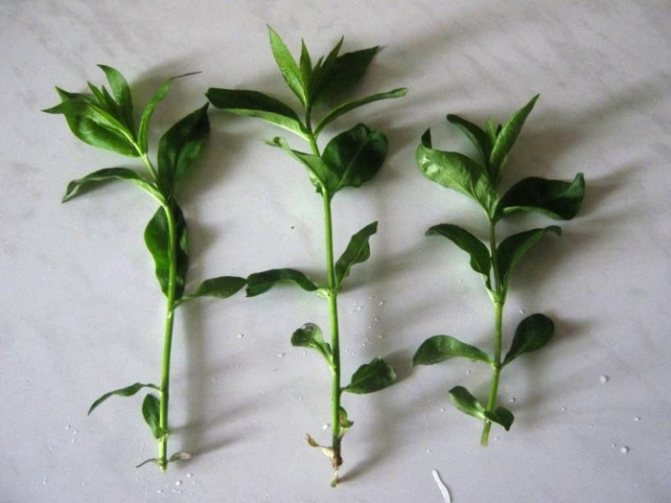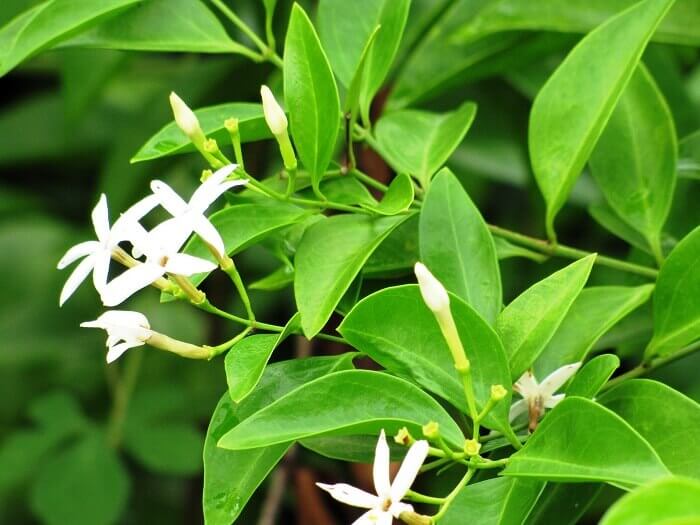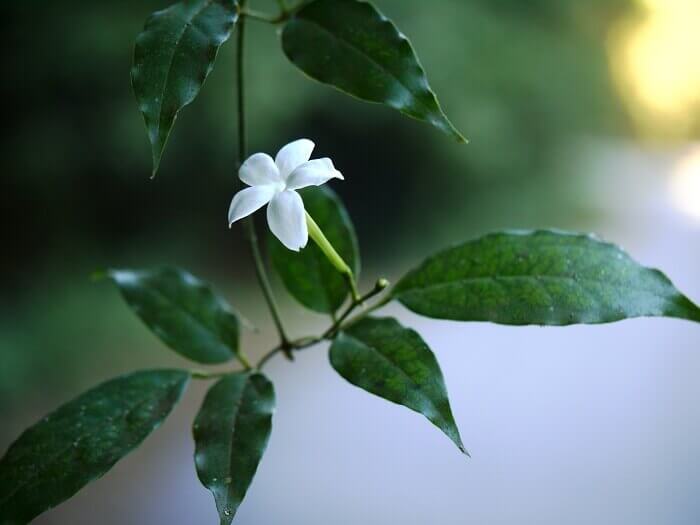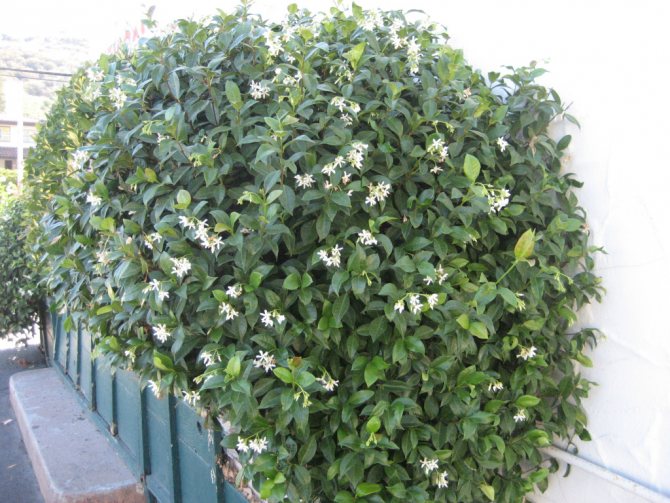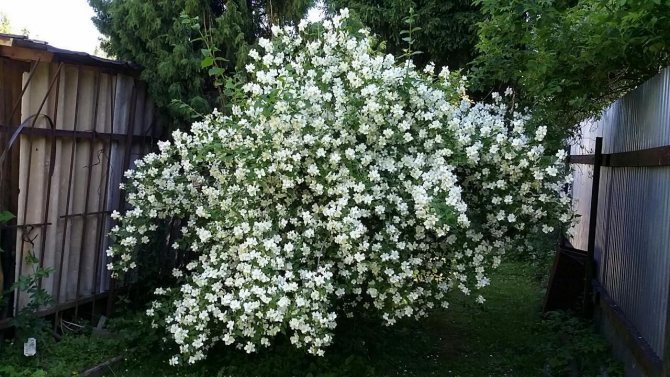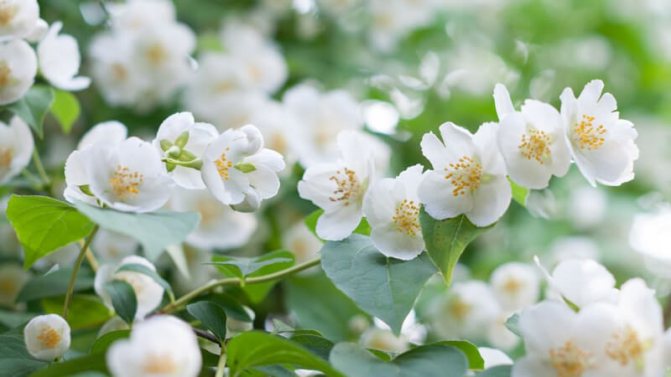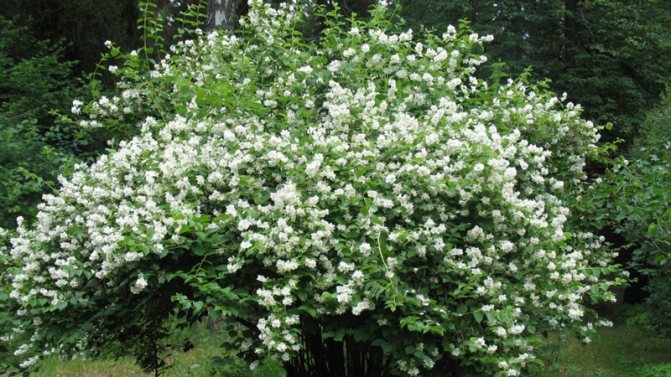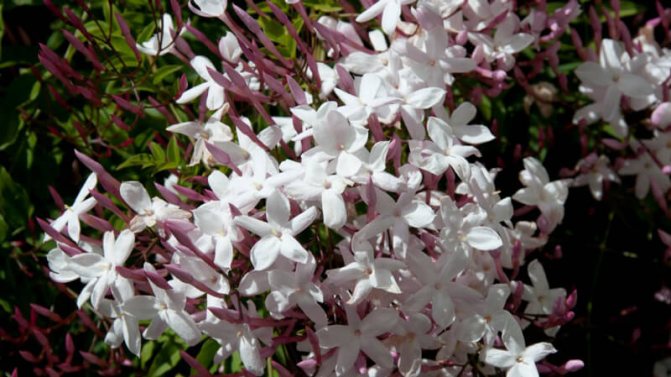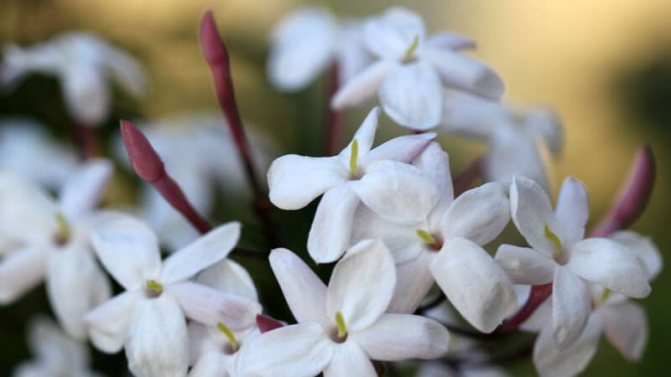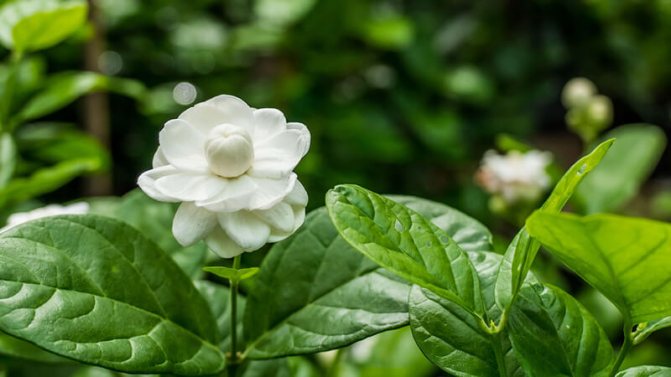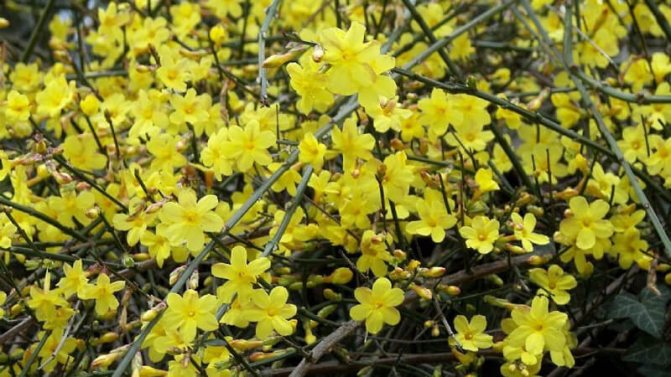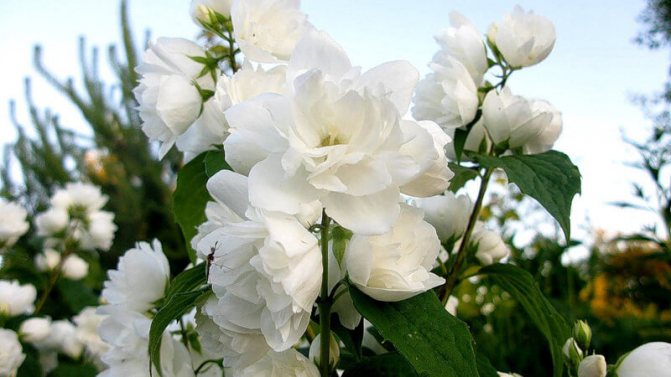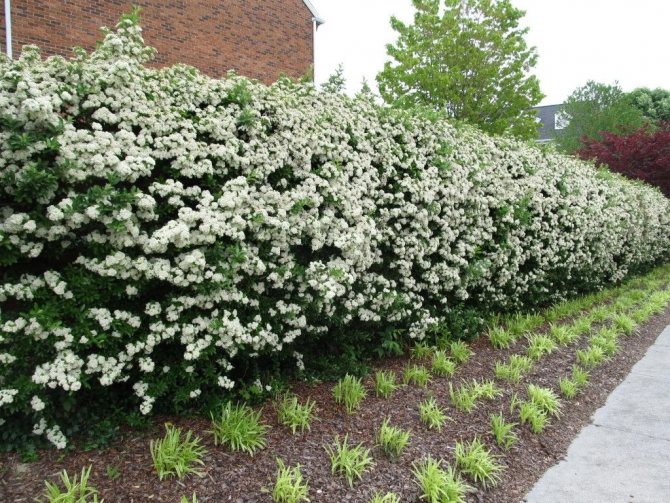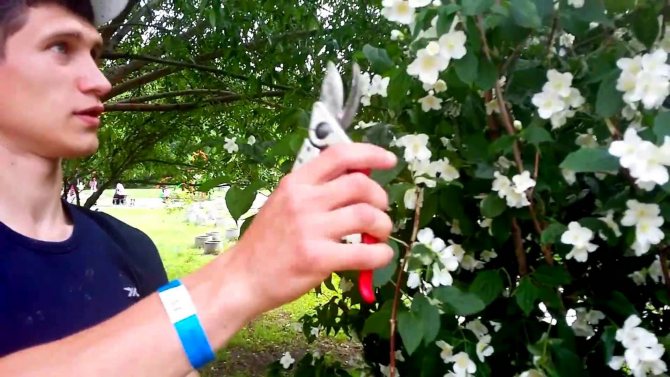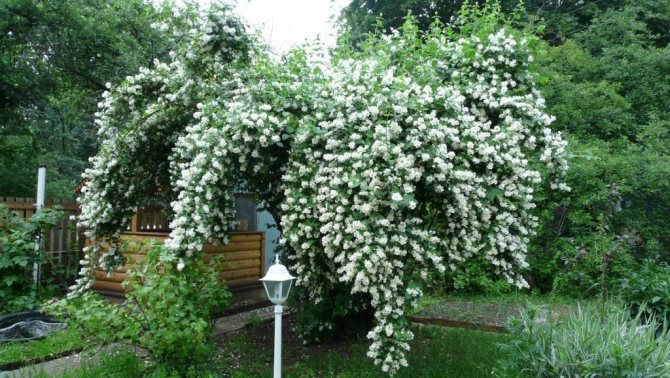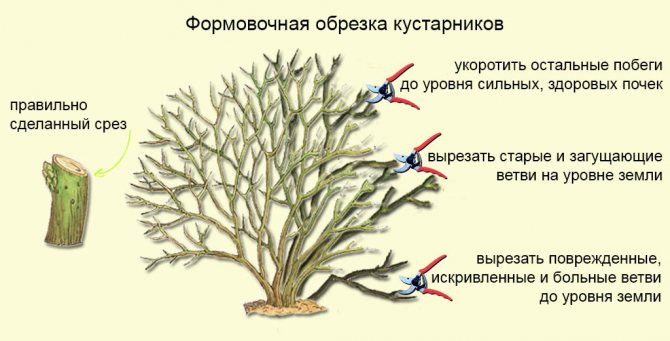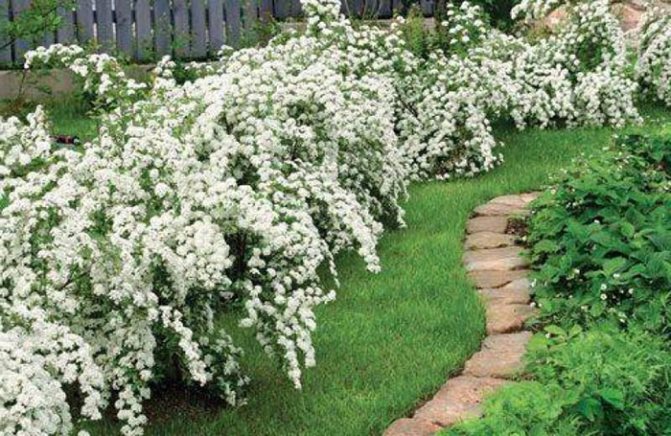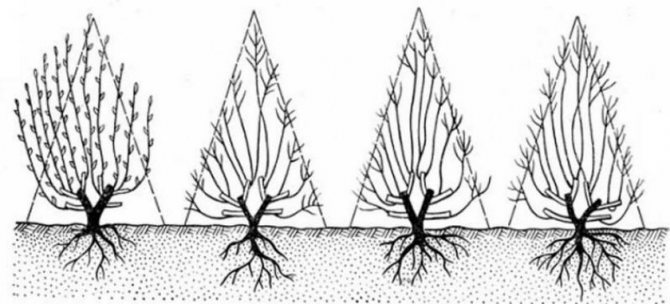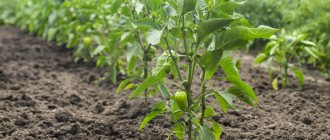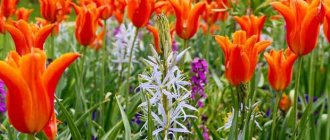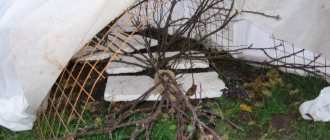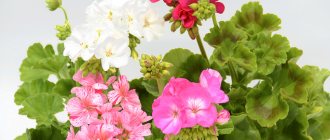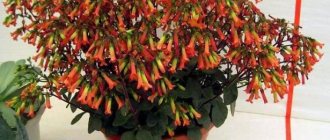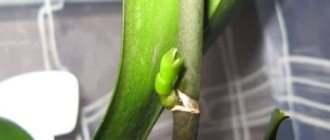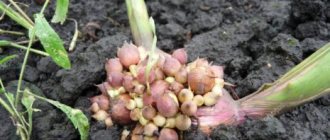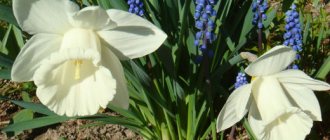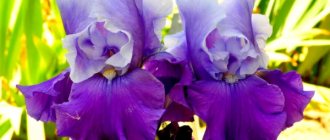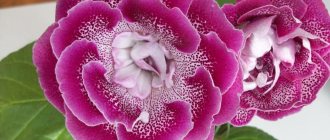Garden jasmine is often confused with another shrub common in Central Russia - mock-orange. Both plants bloom in spring and summer with white flowers with a strong sweet scent. Jasmine belongs to the Olive family (Latin Oleaceae), and the mock orange belongs to the Hortensia family (Latin Hydrangeaceae). To get a truly beautiful jasmine bush, you need to know how and when to prune jasmine, as pruning is a significant part of the regular maintenance of your ornamental crop.
Jasmine (shrub): planting and care, photo, pruning
To grow a neat and beautiful plant, it is important to know and follow some agricultural techniques:
- Jasmine tolerates shade well, so it can grow both in the sun and in shaded places. But a plant planted in a well-lit area will develop much faster and bloom more abundantly.
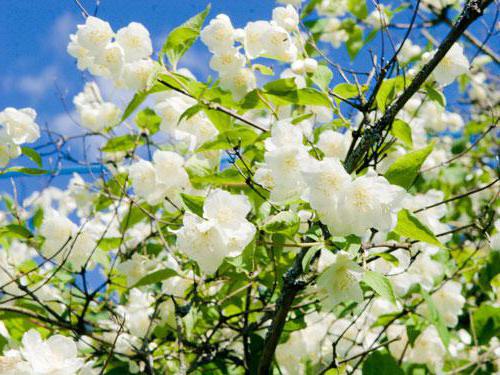
- Planting seedlings can be done in early spring or autumn. These are favorable periods for the rooting and development of young bushes.
- The plant is not picky about the soil, but it can only open up in all its glory on fertile soil.
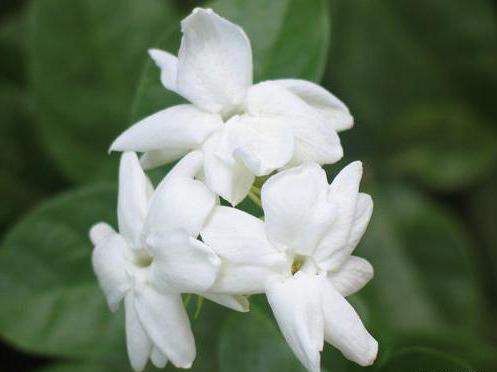

- Jasmine does not tolerate stagnant water, so it is recommended to plant it in a high area, or to do preliminary drainage from rubble and sand, gravel or broken brick at least 15 cm high.
- A pit for planting a seedling is dug out at least 50 cm deep. The soil must be fertile enough. It is desirable to introduce nitrophoska (30 g). When planting a plant, it is important to ensure that its root system is buried no more than 3 cm into the ground. The ground around the bush should be tamped and watered abundantly.
Choosing a place for planting jasmine in the open field
Closed-root plants are marketed in nurseries. Planting of young jasmine seedlings is carried out from mid-April to October.
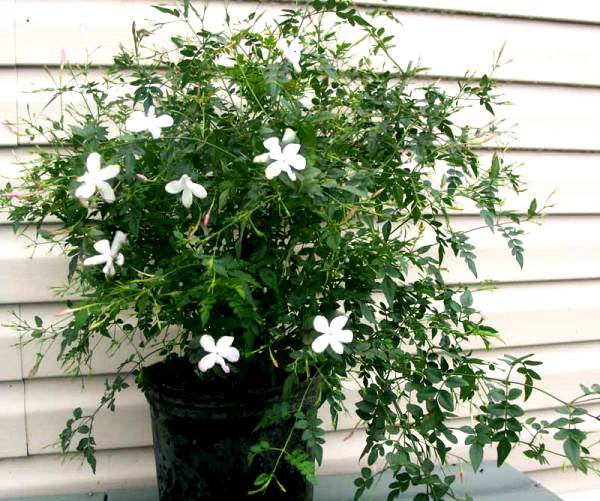

White jasmine seedling
A heat-loving culture needs to choose the right place for further cultivation. The best place to plant jasmine is in full sun or light partial shade.
The plant should receive at least 4-5 hours of direct sunlight in the summer. In the shade, jasmine grows poorly and hardly blooms. In the garden, a thermophilic culture is planted on the south side near walls or fences that can protect from the cold winter wind.
The shrub grows well on ordinary garden, moderately fertile, slightly moist soil and prefers soil pH in the range from 6.1 to 7. On alkaline and heavy clay substrates, it gets sick and dies.
Attention! The soil should be well-drained, especially if the plant is planted in a shady or cool area of the garden.
How to plant jasmine? Before planting, a drainage layer of broken brick or large expanded clay is laid out at the bottom of a pit 50 × 50 in size, a little soil mixture is poured (leaf earth mixed with 2 parts of compost and 1 part of sand).
Then an earthen lump of the seedling is placed, covered with earth, tamped down and watered abundantly. After planting, species with drooping, thin shoots are tied to a support.
Top dressing
- Top dressing of garden jasmine begins approximately one year after planting.
- Among organic fertilizers, slurry manure has proven itself well. To prevent the jasmine bush from getting burned, the manure is diluted with water 1 to 10. This feeding is carried out once a year.You can also use wood (birch or apple) ash. For one bush, 100 g of such fertilizer is quite enough.
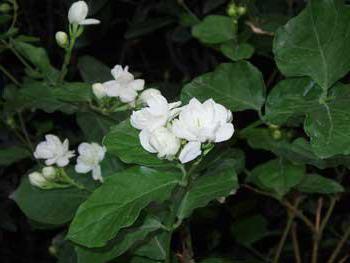

- The following composition can be used as a mineral fertilizer. For 10 liters of water, take: 30 g of superphosphate, 15 g of potassium sulphide and 15 g of urea. All components must be thoroughly mixed in a bucket of water and pour the contents under one or two bushes. A faded plant can also be fed by adding 20 g of superphosphate and 15 g of potassium to the soil.
Description of the variety species
Jasmine has distinctive features, it is easy to recognize it among its fellows. The bush is curly or straight, covered with a thin stem, amazing flowers bloom on it. They are solitary or in the form of inflorescences, the color is pink, white, cream, yellow.
In nature, there are about 250 different varieties and species, which include the following description:
- Jasmine is a flattened, small bush, flowers are pale purple in color.
- Shrub jasmine is a tall plant (1.5 meters), the leaves are connected in pairs, the inflorescence is yellow, and are placed on the side stems.
- The casket is a fairly tall plant, it can grow up to 3 meters. Small, white flowers with a mint scent bloom on the bush.
- Jasmine multiflorous belongs to the climbing type of bushes, grows from 1 to 3 meters. Branches, stems and leaves are covered with hairs, the shrub becomes gray. Flowers outwardly resemble small stars, which are collected in bunches. The color of the color itself is pale pink.
- White jasmine, popularly called medicinal. In folk medicine, infusions and decoctions are prepared from inflorescences. Flowers are located on thin pedicels, spreading a fragrant aroma in the air.
- Pink jasmine Biss. The height of the bush is up to two meters, the shrub blooms in May. The leaves are dark, ovoid. The flowers are pink in color and have delicate odors.
- Jasmine Sambac is one of the most common varieties grown in European countries. The flowers are white with a fragrant aroma. There are semi-double and double varieties.
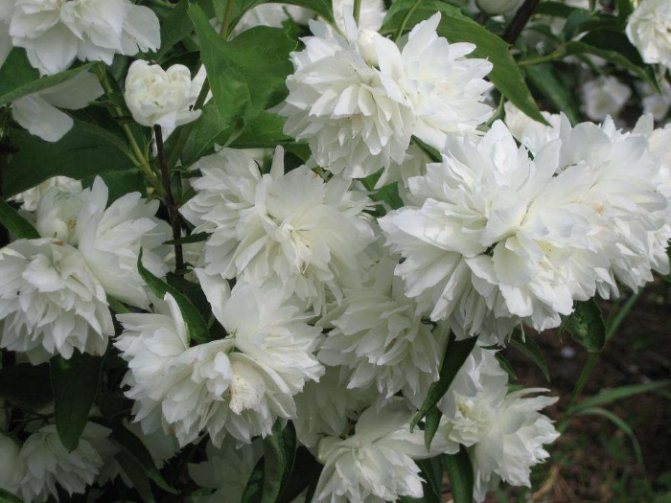

As a result of breeding work, terry varieties were bred. Non-double species have a fragrant aroma, double flowers have a less pronounced odor.
Terry jasmine is one of the most beautiful and popular types, the following varieties are distinguished:
- virginal;
- glacier;
- anshantman;
- pyramidal;
- girandol;
- blizzard.
Jasmine: grooming and pruning
When growing jasmine, pruning is an important process: it gives the plant a neat and tidy appearance and helps the bush to look healthy and lush. The first pruning is done immediately after planting the seedling. On the bush, remove all the shoots that are located incorrectly, leaving only two or three branches with several strong buds. Everything else is cut out.
Jasmine is not a winter-hardy plant and needs warmth. In regions with more severe climates, the bushes freeze slightly every winter, and many spoiled, dry branches appear on them. That is why spring pruning of jasmine is carried out after winter. It is done only with a sharp instrument. A quality pruner is perfect for these purposes.
Jasmine propagation technology by cuttings in autumn
Jasmine bushes can be propagated in several simple ways, but cuttings are the most preferred option for obtaining a flowering plant:
- in the late autumn period, after the foliage has fallen, lignified shoots are cut, from which cuttings are harvested;
- cut cuttings are placed in boxes filled with sufficiently well-moistened sand, where planting material is stored throughout the winter at a temperature of 0-3 ° C, preferably in a basement or in a cellar;
- in early spring, the harvested cuttings are soaked for about a day in a solution based on the Epin-Extra biostimulator at the rate of 1 ml per liter of warm and settled water;
- planting should be carried out in a moist nutrient soil mixture based on turf and sand in a 1: 1 ratio;
- plantings are covered with polyethylene, which will achieve a greenhouse effect.
Spring pruning
Pruning jasmine in the spring is done before the buds awaken. This procedure promotes fuller flowering and good growth of young shoots.
In order for the crown of the plant to be beautiful, when pruning, it is necessary to remove all branches that are older than 9-10 years, as well as shoots that thicken the crown. As a general rule, pruning jasmine correctly in spring involves removing very mature branches to make room for young shoots. After that, the shrub releases many young shoots, which will bloom magnificently the next year. The best time for spring pruning is the end of March - the first decade of April.
If the bush is still young and not more than 2-3 years old, in the spring it is necessary to remove the branches that darken the crown. Typically, jasmine pruning is done one year after planting.


Autumn procedure for preparing shrubs for winter
You need to take care of jasmine after the end of the growing season. Autumn is the right time for sanitary, thinning and rejuvenating pruning. Do not wait for frost, as at negative temperatures jasmine branches become brittle.
It is very important to remove not only everything that spoils the appearance, but branches damaged by pests and diseases. There will be no buds on branches older than 5 years, so they cannot be left either. Cut out the growth that is too far behind the bush.
Note! Correctly formed branches are not directed towards the inside of the crown and do not intersect with each other.
Before wintering, water-charging watering is carried out in order to saturate the roots with moisture. Do it 2-3 weeks before stable frosts. To protect the roots from frost, the soil under the jasmine is mulched with sawdust, peat, pine needles (layer up to 20 cm thick). Instances younger than 3 years old are wrapped with agropanel and tied.
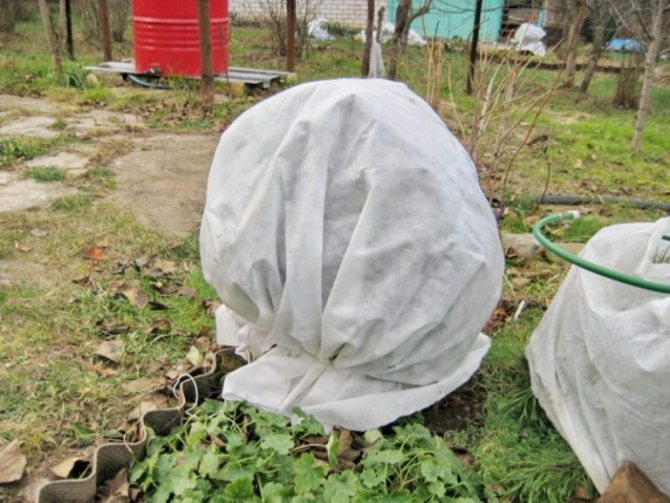

Winter bush shelter
Pruning after flowering
After flowering jasmine, it is also necessary to prune the bushes. Firstly, it helps to maintain their decorative effect in shrubs, since the purpose of this procedure is to remove wilted inflorescences. Secondly, pruning jasmine after flowering contributes to the formation of a lush bush, since all varieties of this plant, especially vigorous ones, can grow one-sided under uneven lighting.
The procedure is done with a sharp instrument, while the withered flowers are cut off. In this case, it is not necessary to process the cut site. Also cut off too long shoots, spoiling the decorative effect of the crown of the bush. At the same time, you can perform another sanitary procedure. To do this, examine the bush, remove all weak and diseased shoots, broken branches.
Diseases and pests
Jasmine rarely gets sick, mainly, it is attacked by insects - pests, but with proper processing, these problems can be solved quickly.
| Pests | Control measures |
| Spider mite | Spraying with 0.1-0.3% Keltan emulsion or 0.2% Phosphamide. Repeat 2-3 times in 6-8 days. Infusion of potato tops: 2 kg of tops per 10 liters of water, spray 3 times after 5 days, An infusion of yarrow or burdock can also help, they are also prepared. |
| Bean aphid | Spraying with Karbofos, Rogor or Fufanon (10 ml per 10 liters of water). You can treat it with infusion of black henbane, potato tops, pyrethrum, makhorka or yarrow. |
| Green leaf weevil | Spraying with Chlorophos and Fufanon is enough 3 times. Mustard infusion, 0.5 kg per 10 liters of water. |
| Shield | Spraying with Aktelik, 1 ampoule per 1 liter of water, no more than 4 times. Phosbecid, 20 ml per 10 liters of water, onion or pepper infusion. |
| Whitefly | Preparations Aktara, Confidor, Fufanon according to the instructions, spraying with garlic or dandelion infusion. |
| Mealybug | Mospilan, Allaudom, Spirotetramat (new drugs) according to the instructions. |
When growing garden jasmine, the main problem may be the lack of flowering.
The reasons may be:
- Strong shading of the plant;
- Burnout in prolonged direct sunlight;
- Insufficient watering;
- Stagnant moisture in the soil;
- Spring frosts;
- Insufficient organic feeding;
- Pruning errors.
If the buds are tied, but do not open, it means that the shrub receives less light. If the leaves curl and fall off, there is not enough watering.
Formative pruning
The height of jasmine can reach more than 2 m, while a bush that is too tall often looks rather untidy. To improve the appearance of the plant, formative pruning of jasmine is carried out. It must be done during the entire growing season. When forming a shrub, too long branches are pruned, giving the plant a neat shape. Thin and weak shoots are shortened by half or one third. The purpose of this pruning is to give the desired shape to the bushes. In addition, this procedure causes the growth of new young shoots, which will have many flowers next year.
Formative pruning is also necessary if the plant is used as a hedge. For this, the strongest branches are cut slightly, and the thinner ones, on the contrary, are cut strongly. This improves the shape of the plant and promotes good growth of annual shoots.
Reproduction of chubushnik
This plant can be propagated very simply with the help of seeds, cuttings, layering and dividing the bush. It is relatively easy to grow a mock-orange from seeds, but this method of propagation is not recommended for varietal plants. The fact is that grown seedlings may not inherit parental traits.
Seed propagation
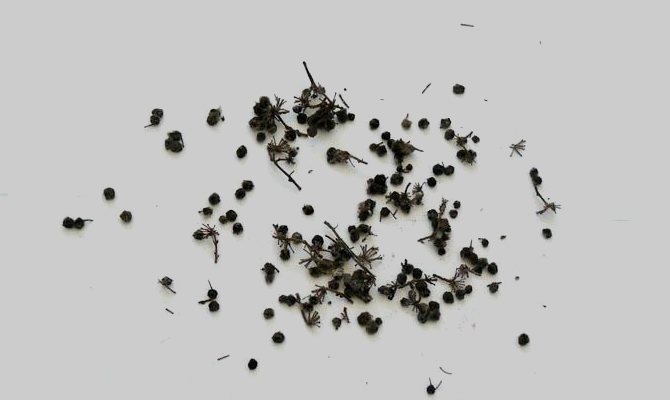

Before sowing seeds, they should be stratified, which lasts 8 weeks, while the required temperature is 2-3 degrees. In January, seeds are mixed with a moistened mixture of sand and peat, everything is poured into a container and put into the refrigerator in the vegetable section. In March, seeds are sown in boxes filled with a soil mixture consisting of 2 parts of peat, 1 part of leafy soil, 1 part of humus and ½ part of sand. A thin layer of sand is poured over the sown seeds, and the container is covered with glass. The ground should be a little damp all the time, so it will have to be sprayed 2 or 3 times a day. After 7-10 days, the first seedlings should appear. Once they have a few true leaf blades, they can be transplanted into open soil. At first, the transplanted seedlings must be protected from direct sunlight.
Propagation by green cuttings
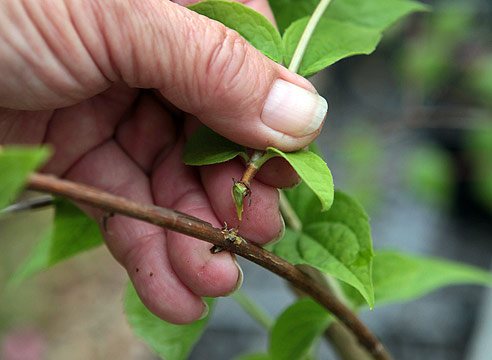

Absolutely everything takes root green cuttings. For cutting cuttings, developed rather large shoots are used. It should be noted that growth shoots are not suitable for this purpose, which have a rather wide hollow core and, at the same time, the distance between the buds is quite large. The fact is that rot may well appear in these voids. A green stalk with a heel (annual shoots with a particle of last year's shoot) takes root best and fastest. The lower cut of the cutting must be treated with an agent that stimulates root growth. Planting is carried out in a container filled with a mixture of soil and sand, enriched with nutrients. The landing is carried out on the floor a centimeter depth, adhering to the 40x10 scheme. From above they must be covered with a cap made of polyethylene or glass, put the container in a place where there is diffused light. The cuttings should be moistened with a sprayer often enough.
Reproduction by layering
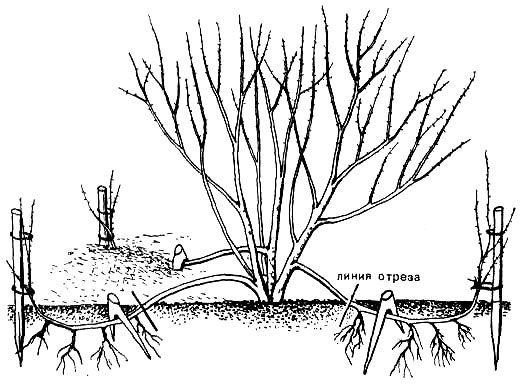

Layers are formed rather quickly and they take root in 5-7 cases out of 10. This propagation method is recommended to use after rejuvenating pruning, while the bush should be cut to a height of 5-7 centimeters from the ground surface. Around the bush, the soil must be dug up, fertilized and leveled. A young shoot with a soft wire should be pulled next to the bud located at the very bottom, then it is placed in a small groove (15 mm deep), fixed and sprinkled with soil. It is quite possible to get several layers at once from one bush in one season, if they are arranged radially. With the onset of spring, they should be cut off from the parent bush and dug up. It will take another couple of years to grow them.
Reproduction by dividing the bush
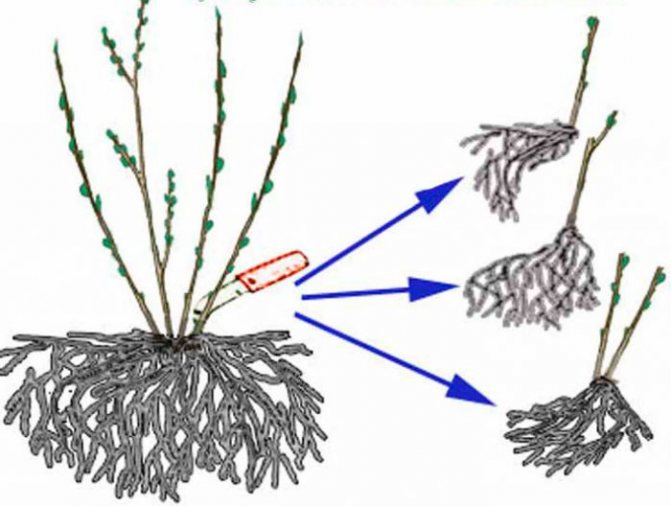

Before the sap flow begins in the spring, or after all the leaves fall off the overgrown bush in the fall, the mock-orange must be dug out. Then it is divided into several divisions and, as soon as possible, they are planted in prepared holes, so that they do not have time to dry out. In the process of dividing the bush, old branches should be cut off, and young shoots should be dug out.
Rejuvenation
Over time, the jasmine grows, its branches become bare. If the shrub has become old, it is necessary to perform anti-aging pruning. You can do it throughout the season, but spring is considered the best time for this. To rejuvenate jasmine bushes, 4 or 5 trunks must be cut to 0.5 m, and the remaining shoots must be cut to ground level, that is, to the base. In order for the plant not to get sick with fungal diseases, all bare sections of the cuts must be processed. The best remedy for this is garden var. After rejuvenating pruning, the trunk circle is mulched and fertilized with compost or mullein solution. Pruned shrubs must be watered and fertilized abundantly throughout the summer to gain weight faster.
When new shoots begin to appear from the dormant buds, they must be completely removed. After rejuvenating pruning, gardeners leave no more than three strong branches on the hemp. This is the future basis for a new bush. The next year the plant will gain weight, and in two or three years it will be possible to enjoy the beautiful lush flowering of a dense new bush.
How to plant jasmine correctly
Jasmine is considered an ornamental shrub that can grow on any type of soil. For maximum efficiency, it is recommended to give preference to quality soil.
Site selection and soil preparation
The soil for the plant is prepared taking into account the recommendations:
- No slow flow of groundwater. This leads to stagnation of moisture, which causes rotting of the root system. The planting site is ideal where the groundwater lies as far as possible from the plant itself.
- The soil should be fertilized with nitrophoxia in the amount of 30 g per well.
- The soil should be moistened before planting to reduce stress on the seedling.
- The plant hole should be no deeper than 0.5 m.
- The holes are planted between each other, taking into account the further spreading of leaves.
Planting a plant
Landing is carried out, as a rule, at the beginning or end of summer - immediately after the heat recession. After the planting procedure, you need to compact the soil around the plant and fill it with water for maximum growth efficiency of the seedling.
Feeding rules
Top dressing is an important stage for the growth of shrub jasmine. Top dressing should be used for the first time the next summer after planting. In this case, mineral fertilizers (urea, superphosphate, potassium sulfate) are used in proportions of 1.5: 3: 1.5: 1. In the spring, you should add organic fertilizers, diluted with water according to the instructions.
Autumn pruning
In the fall, sanitary pruning of jasmine is carried out again, and shoots that are too long are shortened.Also, the plant begins to prepare for winter.
As a rule, mature jasmine bushes do not need any additional preparation, as they tolerate cold temperatures well. During the winter period of time, only the tops of young branches are mainly damaged, but after the spring formative pruning, the shrub quickly gains strength and fully recovers.
But it is not so easy for young plants to endure the winter cold, therefore, if the jasmine bush is not yet a year old, it must be covered in late autumn.
In late autumn, near the trunk of the plant, they dig up the soil and cover it with mulch, manure, garden compost or pine needles. This is done so that the jasmine root system does not freeze.
Due to its unpretentiousness and ease of care, ease of reproduction, this plant has won the hearts of many gardeners. An adult flowering jasmine (shrub), the pruning of which was discussed in our article, is the hallmark of the garden. A charming unique aroma, abundant beautiful flowering, snow-white, simple, double flowers attract the eyes of all passers-by. Looking at the bush, you just want to stop, breathe in its delicate aroma and enjoy the magnificent beauty.
Plant Formation Tips
The crown can be formed throughout the season if:
- jasmine is too thick;
- stretches in height;
- grows asymmetrically.
These factors negatively affect flowering and inhibit the development of culture.
How to correctly form a jasmine bush:
- To delay the pulling out of fast-growing branches, their number is halved. Due to this, lateral processes appear, on which new inflorescences are formed.
- To reduce the density, up to 4 old shoots and branches growing inside the crown are completely removed.
- To give the bush the correct shape, they practice pruning large and elongated shoots.
On a note! Most newbies don't know how best to trim jasmine to make it look pretty. Beginners can simply make the bush symmetrical. The more experienced ones form a ball, cube or other geometric figure out of it. If the plant develops normally and does not lose its decorative effect, then such pruning is carried out every 4 years.
Jasmine Care Tips
Jasmine (care and cultivation in the garden, pruning are discussed above) requires the following activities:
- weekly loosening of the soil;
- removing all weeds;
- application of organic and mineral fertilizers;
- forming a bush, pinching the top to give a beautiful and regular shape;
- timely watering, the soil should not be allowed to dry out;
- removal of faded inflorescences is mandatory;
- thinning the shrub as necessary, removing weak and old shoots;
- apply phosphate fertilizers to enhance flowering.
Description and features of culture
Jasmine is a name for two different kinds of plants. The real one is an indoor culture belonging to the olive family. The bushes growing in the garden are also called jasmine for the similar scent of flowers. In fact, this is a chubushnik plant belonging to the Stonefragment family.
Jasmine is a sprawling, multi-stemmed shrub. Flowering lasts from late May to mid-summer, depending on the variety. Chubushnik is decorative during the entire growing season. The flowers are large, in some varieties they reach a diameter of 6 cm.
With free growth, the branches reach a length of 2 m. They are curved and look very sloppy. Because of them, the chubushnik does not have enough strength to properly nourish new shoots. In order for him to constantly delight the gardener with beautiful flowers, he needs to be cut regularly.
How to care for your culture
It is important not only to plant jasmine on the site, but also to provide it with proper care so that the shrub will please with abundant flowering.
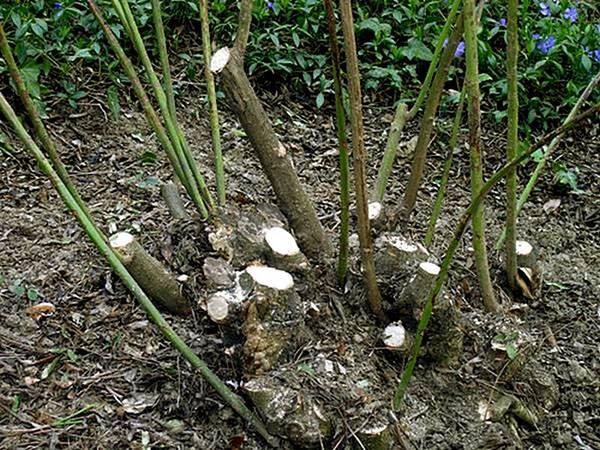

Watering frequency
Jasmine does not require frequent watering, provided it is grown in the middle lane. The shrub is irrigated only in case of prolonged drought and hot weather. The need for moisture is determined by the state of the top layer of the soil and the jasmine itself, the leaves of which lose their elasticity. Up to 30 liters of warm water is added under each plant. In the autumn, before the onset of cold weather, moisture-charging watering is done so that the shrub can more easily endure the winter and not freeze.
Top dressing
Top dressing is required for jasmine from the second year of life. Fertilizers are applied during the entire growing season, using both organic and mineral mixtures. In summer, shrubs need more nitrogen, so it is recommended to add urea, superphosphate, and potassium sulfide. From organic matter, manure and humus are used. The recommended dosages should be strictly observed. Otherwise, the shrub will suffer from excess nutrition, will increase its green mass and will not show exuberant flowering.


Loosening and care of the trunk circle
Loosening of the soil in the near-trunk circle of the bush is carried out after each heavy rainfall or watering. Do this carefully and not too deeply so as not to damage the jasmine root system. All weeds are removed at the same time.
Pruning
Pruning is an important part of caring for your jasmine bush. If done correctly, the plant will look aesthetically pleasing, develop correctly and bloom violently.
Formative
Jasmine shaping pruning is more commonly done in early spring. In the fall, it does not make much sense, since during the winter some of the shoots may break, freeze or simply die off. To form a beautiful bush, you need to cut off too long branches, and remove diseased or dried ones altogether. Poorly developed processes are shortened in half to provoke the growth of young branches. This scheme allows you to make the jasmine bush lush, thick and beautiful.
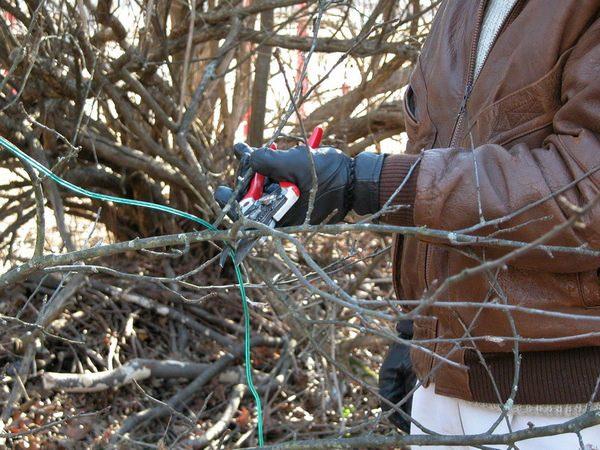

Sanitary
Typically, sanitary pruning is done in the spring. Before budding begins, remove any broken or frozen branches. Shoots with signs of the disease are subject to immediate removal. If the autumn sanitary pruning of jasmine is carried out, then the plant is carefully examined for mechanical damage, the presence of dry shoots or too old shoots, which are best removed immediately.
Pruning jasmine after flowering
Immediately after the end of the flowering of the jasmine bush, it is examined and, if necessary, pruning is carried out. Dead inflorescences, weak and diseased branches are removed.
Rejuvenating
Over time, the jasmine bush grows old and loses its attractiveness. Bare shoots not only spoil the view, but also impede the growth of young twigs. As a result, flowering is not so exuberant. In this regard, the plant needs a rejuvenating pruning once every few years. Work is carried out in the spring, before bud break. Choose 4 or 5 attractive stems and shorten them by 50% of the length, the rest are simply cut at the root.
See also
Planting and caring for the dicenter in the open field, description of varieties and cultivationRead
The cut sites are treated with garden varnish. With the beginning of sap flow on the stumps, buds will wake up and give new shoots, from which several of the strongest are selected. It is they who will form the crown of the renewed jasmine.
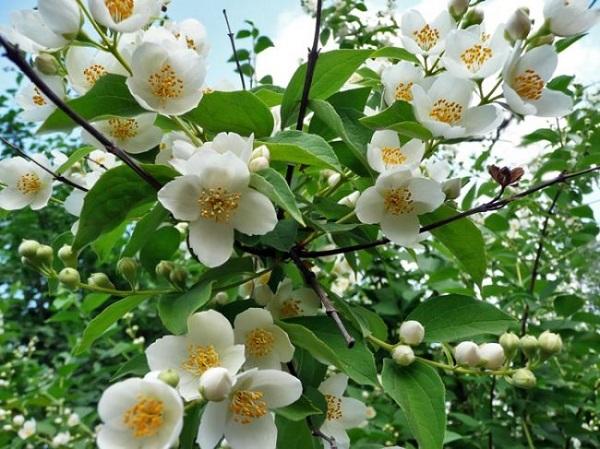

When to transplant to a new location
Transplanting a jasmine bush to another place is rarely done, in case of emergency. The reasons for this may be various, for example, closely growing trees began to block the access of light to the shrub. There is a debate among gardeners about when to replant the plant so that the stress for it does not turn out to be too strong.Most agree that the work should be planned for the spring. The procedure itself is not much different from the usual planting of jasmine on the site.
To transplant it to a new place, it is necessary to dig a planting hole, which will correspond in volume to the root system.
It is preferable to dig out the bush together with a lump of earth and not shake it off when transplanting.
Treatment and treatment of diseases and pests
The jasmine bush is most often affected by pests such as:
- weevil;
- spider mite;
- aphid.
As a result of their impact, the shrub loses its decorative properties, ceases to develop normally, its foliage curls up into a tube. At the initial degree of damage, the leaves of the plant are removed along with the pests and burned, and the jasmine is treated with a solution of laundry soap. In case of severe damage, insecticides are used.
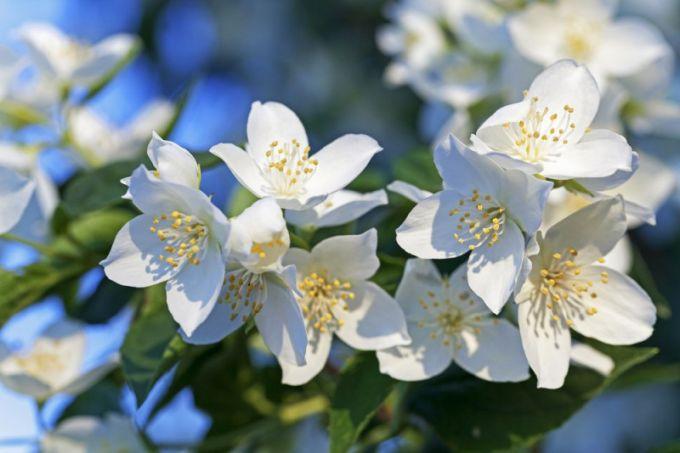

Jasmine is highly resistant to disease, which is most often due to lack of nutrients. For prevention purposes, it is recommended to apply complex mineral fertilizers.
Preparing a shrub for winter
In order for a garden jasmine to easily endure the winter outdoors, it will need proper and good preparation. An adult shrub tolerates the cold season better than a young one, therefore it does not need special preparation and insulation. Immediately after the end of the flowering period, young specimens are covered with a specially designed material or ordinary straw is used. The soil in the near-trunk circle of the bush is dug up and compost is introduced into it.

